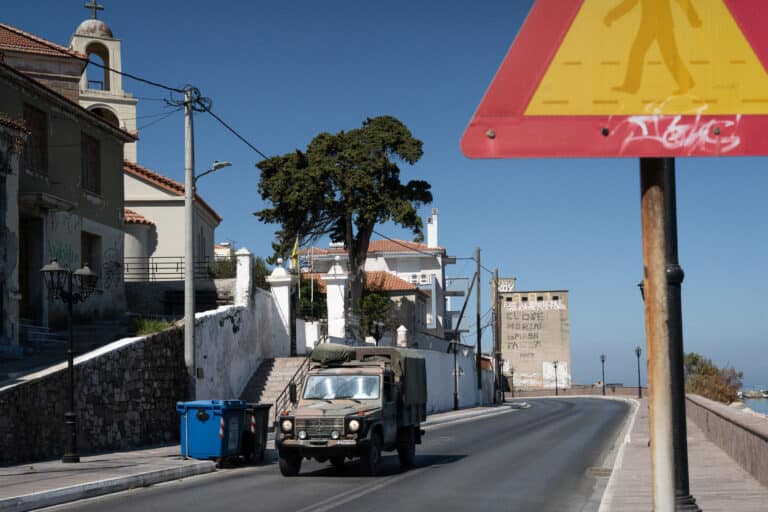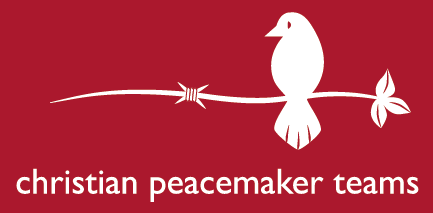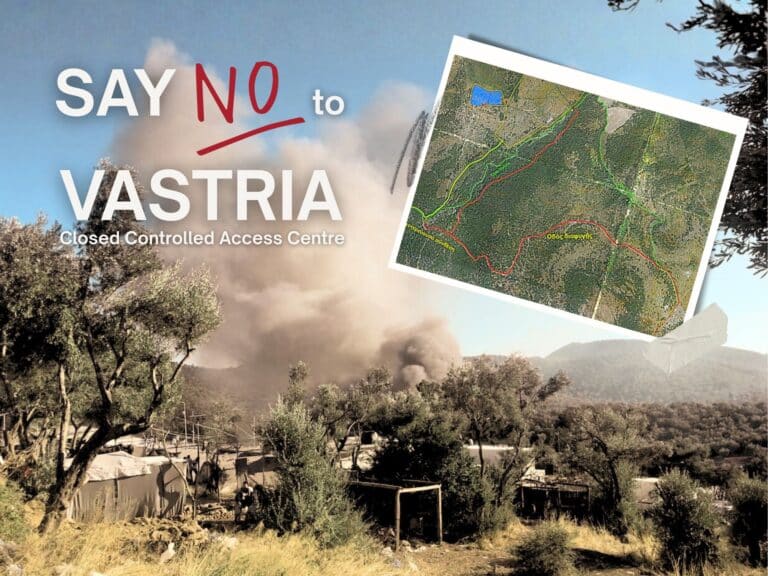[The author was part of CPT’s December 26-January 9 delegation to Iraq.]
I expected to see a crater blasted into the earth, smashed concrete, rubble–some obvious sign of destruction.
We came instead to an immaculately-kept, sand-coloured building. Though windowless and bulky, care had been taken to ease it into the neighbourhood. The entrance was marked by a series of pleasing arches, a mural of pastel geometric shapes to the side. If I had been in Canada I might have guessed that it was an arena.
This was Baghdad’s Amiriya shelter, part of a network of thirty-four bomb shelters constructed during the Iran-Iraq war. It was here, on February 17, 1991, that two American “smart-bombs” incinerated 408 people.
We passed under the arches, went through a massive, vault-like portal and stepped into a hellish black cavern. The back of my neck tingled.
Then I saw it, in the ceiling — what I recognized from pictures — an oval gash of light that poured into black through a curtain of twisted steel. The light illuminated a crater of exploded cement and broken
girders.
As my eyes adjusted to the darkness, the particularities of this horror began to emerge: mangled remnants of electrical and ventilation systems hung from the ceiling; black blotches where the backs and arms and legs of sleeping women and children were charred into the floor; massive concrete pillars stripped to re-bar; ghostly images of human beings seared into walls. Our guide pointed to the outline of a head, shoulder, bent elbow–a woman holding her baby.
The U.S. military delivered the bombs at 4 o’clock in the morning. According to an Associate Press reporter, “Most of the recovered bodies were charred and mutilated beyond recognition.”
On the inside, place of agony, atrocity, horror, holocaust. On the outside, just another building. Things are not as they seem.



